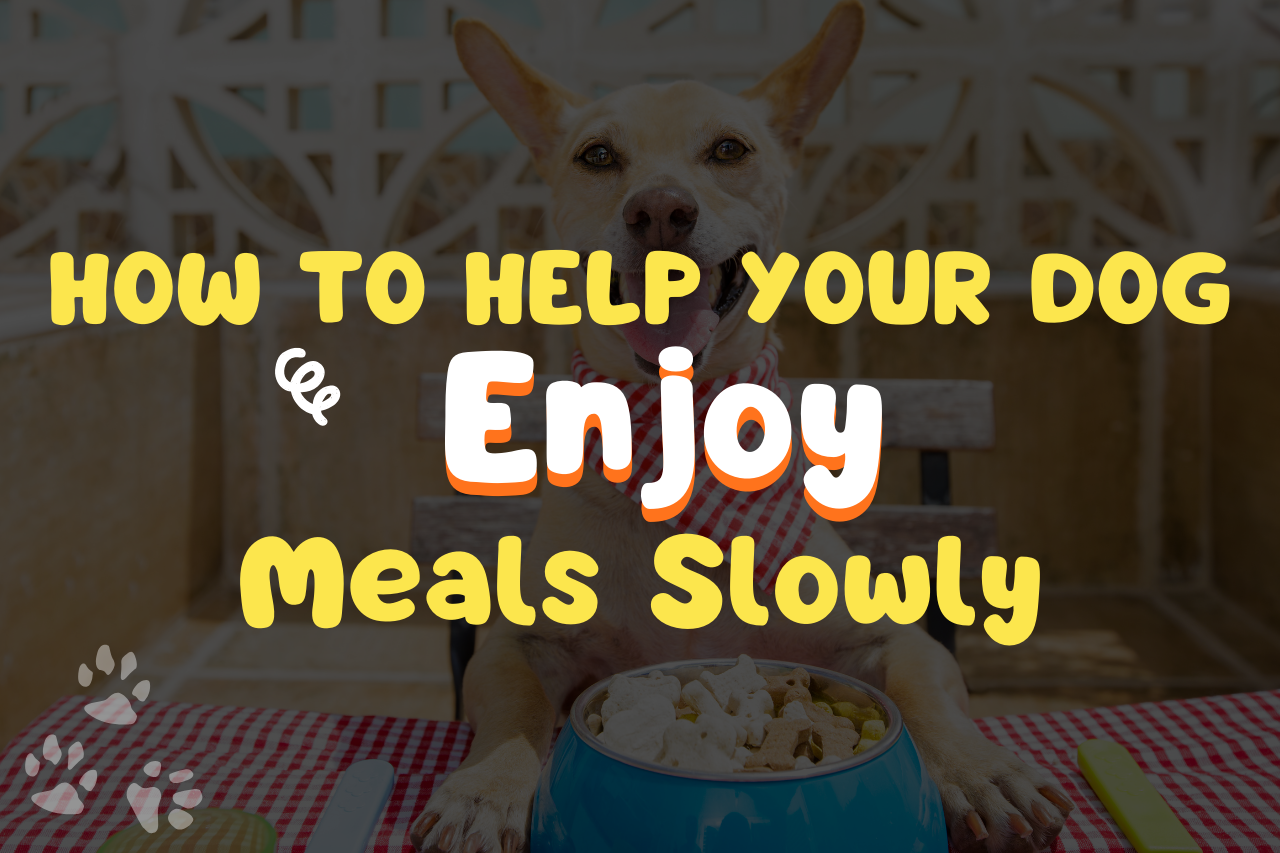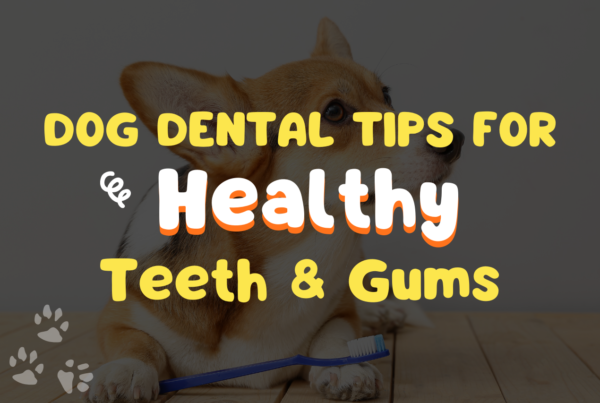
How To Help Your Dog Enjoy Meals Slowly: Effective Strategies for Healthier Eating Habits in Canines | Pet Care Guide
Dinnertime is more than just a meal; it’s a daily ritual filled with excitement, especially for your four-legged friend. Picture this: As the clock strikes mealtime, those eager eyes and wagging tail reveal your pup’s sheer anticipation.
Yet, there’s a catch. No sooner is the bowl on the floor than it’s licked clean, leaving us chuckling yet concerned. Speed-eating, while amusing, isn’t ideal for our furry companions. It’s a habit we ought to gently curb for their health.
So, how about we transform this rapid routine into a more enriching experience? Let’s embark on a journey to introduce mindful munching for our dogs, turning mealtime into a delightful and nourishing adventure.
Why Slowing Down Matters
Before we explore the toolkit for transforming your speed demon into a dignified diner, let’s understand the “why” behind slow eating. It’s not merely about avoiding an upset stomach or uncomfortable burps; it’s about preventing a buffet of health concerns:
Bloating and Indigestion: Inhaling food traps air in the stomach, leading to uncomfortable bloating and potentially painful gas.
Vomiting and Regurgitation: Fast eating increases the chances of food coming back up, requiring unpleasant cleanup.
Weight Gain: Speedy eaters may not feel full, leading to overeating and potential health issues.
Choking and Aspiration: Inhaling large food chunks can cause serious health problems, including choking or inhaling into the lungs.
The Gear Up: Tools For A More Mindful Mealtime
Now equipped with an understanding of the importance of slowing down, let’s explore the paw-fect tools to make it happen:
Slow Feeder Bowls: These innovative bowls come in various designs, turning dinnertime into a maze for munchies. Raised ridges, spiral patterns, or compartments force your dog to navigate, slowing down their pace and satisfying their natural foraging instincts.
Food Puzzles: Ditch the traditional bowl and turn their feeding time into a mental adventure. Interactive food puzzles dispense kibble as your dog interacts with them, providing mental stimulation and letting them take their time.
DIY Solutions: Get creative by scattering kibble across a playmat, hiding it in cardboard boxes, or even sprinkling it around the yard for a sniff-and-seek feast. Play a little “kibble camouflage” to satisfy your dog’s natural sniffing instincts and encourage slower, more mindful eating.
Training Time: From Scarfer To Savory Chewer
While tools are crucial, the real magic happens with positive reinforcement and consistent training:
Calm Down Before Chow Down: Hyped-up dogs tend to scarf down food. Implement calming exercises before meals, such as gentle petting, short walks, or quiet playtime.
Portion Control: Divide your dog’s daily food into smaller, manageable meals throughout the day. This prevents overeating and allows your dog to feel full without inhaling their food.
The Waiting Game: Make your pup “earn” their food by performing a trick before getting their bowl. It helps them eat at a more relaxed speed, letting them truly enjoy their meals and promoting a fun and healthy mealtime.
Praise Slow Eaters: Reward your dog with verbal praise, gentle pats, or a small treat when they take their time with meals. Positive reinforcement shapes good habits.
Beyond The Bowl: Making Mealtime More Than Just Munching
Mealtime is an opportunity for bonding and enrichment. Here are additional tips to enhance your furry friend’s dining experience:
Homemade Toppers: Don’t underestimate the power of a simple homemade topper. Toss together quick batches of scrambled eggs, cooked veggies, or even shredded chicken to sprinkle on top of your dog’s kibble, adding excitement and flavor to their daily menu.
Creating a Calm Environment: Designate a quiet space for meals, away from distractions. Free from the hustle and bustle, they can fully savor each ingredient, making meals here a mindful and enjoyable experience.
Rotate Feeding Methods: Variety breeds excitement. Keep your dog’s meals stimulating and their spirits high with a mix of feeding methods such as scatter feeding in the yard, using food puzzles, stuffing a Kong toy, or creating DIY feeder toys from household items.
Incorporating Wet Food or Broth: Mix in wet dog food, broth, or a combination for added moisture and flavor. Supporting a leisurely eating speed doesn’t just stop the rush; it also makes digestion more effortless.
Social Dining: If you have multiple dogs, consider feeding them together. Mimicking the pack dynamic encourages a leisurely approach to eating. Joining your dog during meals provides companionship and reassurance.
Tailoring Treats: Homemade Goodies For Occasional Indulgence
Variety is the spice of life, even for furry friends! Occasionally supplementing your dog’s balanced diet with homemade treats prepared with safe ingredients like peanut butter, pumpkin, or lean meats can enrich their mealtime experience.
These treats can be used to acknowledge positive eating behavior and introduce new flavors to their palate, fostering a more positive and engaging dining routine.
Sensory Exploration: Engaging Multiple Senses
Adding different options to your dog’s meals beyond just crunchy kibble can be enriching for their senses. Consider mixing in a spoonful of plain yogurt for a textural change, or sprinkle in a bit of pet-friendly herbs like dill or parsley for a light aromatic touch.
Engaging multiple senses during meals can promote overall sensory development and make the feasting hour more enjoyable for your dog.
Consistency In Routine: Mealtime As A Predictable Ritual
Pups are creatures of habit, and their tummies like to know what’s coming. Sticking to a regular feeding schedule, like breakfast at sunrise and dinner by the evening news, can do wonders for their eating habits.
They’ll learn to expect their meals at certain times, which helps them relax and enjoy their food without wolfing it down.
Understanding Canine Body Language: Tuning Into Your Pup’s Signals
Mealtime isn’t just about filling up the food bowl. It’s a chance to check in with your furry friend. Watch their body language during their chow-down. If they’re fidgety or scarfing it down like there’s no tomorrow, something might be bugging them.
But if they’re all tail wags and slow, steady chomps, you know you’ve created a dining room of doggy delight. Keeping an eye on their “food face” gives you clues on how to make munchtime even more magical.
Celebrate Progress: A Positive Reinforcement Journey
Celebrate the milestones, no matter how small. Acknowledge your dog’s progress with positive reinforcement, whether it’s verbal praise, extra playtime, or a favorite healthy treat.
This consistent reinforcement can motivate your dog to continue their journey toward becoming a more controlled and mindful eater.
Monitoring Health: Regular Check-Ins With Your Veterinarian
While implementing these strategies, watch your dog’s overall health closely. Schedule regular check-ups with your veterinarian to monitor their weight, digestion, and any potential health issues.
Plus, your vet can be your biggest cheerleader, offering personalized advice based on your furry friend’s unique needs.
Conclusion
Training your dog to eat slower is not just about discipline; it’s about enhancing mealtime for both of you. Small steps make a big difference, so celebrate each improvement. The key is to keep things upbeat and consistent.
Try introducing mealtime tricks that are enjoyable for your dog. Remember, this isn’t about gourmet meals; it’s about creating enjoyable, shared moments during mealtime.
These changes will gradually help your dog go from gulping down food to enjoying each bite. And the best part? You can join in the fun, making mealtime a delightful experience you both look forward to. Here’s to better and more enjoyable meals with your pup!






